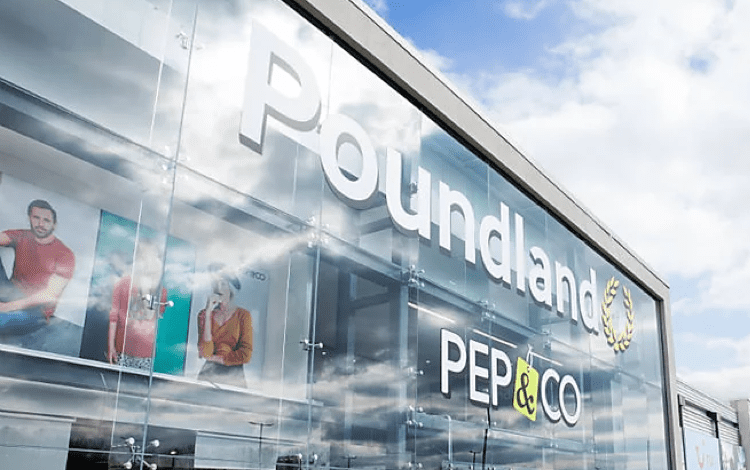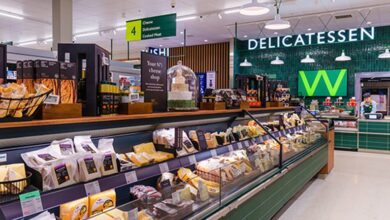Poundland: what does the future hold for the discount retailer?
As consumer behavior shifts toward value-driven shopping, Poundland faces a pivotal moment in its evolution. With rising costs and increasing competition, Retail Sector spoke with retail experts to explore what’s driving the brand’s current challenges and how it can maintain its appeal

Poundland, once the epitome of the UK’s discount retail scene, finds itself at a crossroads as it navigates shifting consumer behaviors, rising operational costs, and an evolving market landscape.
As the cost-of-living crisis deepens and consumer preferences shift, the discount retail sector faces a host of challenges. For Poundland, staying relevant while maintaining its reputation for value is proving to be an increasingly complex balancing act.
The changes at Poundland are reflective of broader shifts in the UK retail market. With a mix of store closures, rising competition, and increased scrutiny on its business model, the industry is wondering: what’s next for the high street’s most well-known pound shop?
A new retail landscape
Consumer behaviour has evolved significantly, particularly with the pressure of the cost-of-living crisis. As disposable incomes tighten, shoppers have become more focused on value, downgrading purchases, and comparing prices. According to Jen Musgreave, strategy partner at RAPP, these trends have reshaped the discount retail sector.
“Consumers are more focused on value and are shopping around more, downgrading purchases, just as we see them doing during any times of economic hardship”, says Musgreaves. “While the number of discounter shoppers has slightly declined, 95% of UK consumers still identify as discount shoppers (Mintel 2025), reflecting that this has become a mainstream habit. The stigma that used to exist around discount shopping has almost entirely dissipated: it’s a badge of honour for consumers to surprise friends and family with the source of their latest bargain.”
As the price sensitivity of UK consumers rises, more shoppers, including middle-income groups, are turning to discounters to make their stretched budgets go further. This has allowed discounters like Poundland to become a staple for many households. However, even in this growing market, Poundland faces the challenge of keeping its brand fresh and competitive.
According to Musgreave, many consumers are trying to avoid waste and manage their cash flow by doing smaller, more frequent shops and “just buying what they need at that moment”. She notes that more people are prioritising essentials over ‘luxuries’ (creating demand for supermarket value ranges) and comparing prices, and are also “actively ‘trading down’ from the big supermarkets to low-cost retailers like Aldi, Lidl, and Poundland”.
Despite the growing consumer shift toward value shopping, Musgreave highlighted the tension that Poundland faces in trying to maintain its appeal. She explains that consumers assume Poundland is too cheap to support an e-commerce model, noting that the cost of delivery might outweigh the cost of the items themselves. She also emphasises that this perception could hinder growth in the digital sphere unless consumers are made specifically aware that the option is affordable.
The impact of rising costs
Poundland is not immune to the macroeconomic pressures that have affected many other retailers in the UK. With rising costs for goods, increased staffing expenses, and the broader impact of inflation, the company has faced considerable challenges in sustaining its business model.
Vicky Bullen, CEO of Coley Porter Bell, pinpoints these difficulties. “Poundland, like many British high street retailers, is struggling, and there are multiple reasons behind this”, she notes. “Consumers continue to seek the convenience of online, and while some successful retailers have maintained their high street presence by creating experiences for their customers, this is not something that is easy to achieve with the Poundland discount model.”
Bullen’s assessment reflects a significant dilemma facing Poundland today – the company has thrived in an era where simplicity and value were the main selling points, but today’s shopper expects more than just a good price. The convenience and experience offered by larger competitors – many of which have strong e-commerce and in-store experiences – are putting pressure on Poundland’s traditional high street model.
Pep&Co and the struggles of brand cohesion
The introduction of Pep&Co – Poundland’s clothing range – has been a particularly controversial move, according to Bullen. The shift to selling non-food products, including clothes, has caused confusion among shoppers, leading to a mismatch in the brand’s messaging and value proposition.
“The Poundland proposition has become muddled – not only is the original idea of selling everything for a pound now long forgotten with multiple price points being introduced, but the introduction of Pep&Co was an awkward transition. Buying toilet cleaner at the same time as browsing clothes just isn’t a good fit beyond the typical supermarket model,” Bullen says.
This strategic shift from Poundland’s roots as a “pound shop” to a more expansive discount retailer with multiple price points has left some customers questioning the brand’s identity. The convenience of being able to buy a wide range of household products at a fixed low price was one of Poundland’s key selling points, and the move toward diversifying its range could dilute that core value.
As Bullen notes: “Poundland is struggling with rising costs of goods and increased staffing costs as a result of the budget. In a low-margin discounter model, it’s impossible to swallow these, leading to inevitable price rises for consumers at a time when their core audience is struggling with the cost of living crisis.”
A need for a new identity?
As competition intensifies from other discounters such as Poundstretcher and Home Bargains, Poundland must find a way to differentiate itself in a crowded market. Musgreave and Bullen both emphasise the need for the brand to find clarity and reinvention in a changing retail world.
“Once it has done that, it needs to ensure its products offer value, not just great prices. It needs to focus on its e-commerce offering to make it at least as good as its competitors and, at the same time, create a positive experience in store – one that people want to engage with,” Bullen suggests.
Musgreave also adds: “Poundland must maintain the perception of value—even at the low price-points, consumers are looking for brands they know (i.e., quality). It’s critical to the relevance of Poundland, now and in the future, that they deliver value beyond price: blending convenience, quality, and competitive pricing will be key to sustaining growth as the economy improves.”
In this light, Poundland’s challenge is clear: it must reclaim its place in consumers’ hearts by offering a blend of value, convenience, and a seamless shopping experience—whether that’s in-store or online.
Navigating the road ahead
Looking ahead, Musgreave remains optimistic about the future of discount retail in the UK. “The headroom is there,” she says. “Most discount chains are reporting sales growth and broadening their ranges to capture more spend.”
However, with challenges such as rising costs and increased competition, Poundland must find a way to adapt. As Bullen suggests: “Poundland needs to focus on clarifying its brand for consumers to establish a clear point of difference from Pound Stretcher, Home Bargains, Aldi, Lidl and all the other discounters. Ultimately, it needs to stand for something in people’s lives.”
As it stands, the future of Poundland depends on its ability to redefine itself as a value-driven brand, offer a compelling in-store experience, and expand its digital presence – without losing sight of the core principles that made it a high street staple in the first place.
Poundland is at a pivotal moment in its journey. While the brand’s value proposition still resonates with millions of consumers, the evolving market conditions – combined with rising costs, increased competition, and a need for brand clarity – pose serious challenges.
In a rapidly changing retail environment, where online shopping and experiential retail are becoming the norm, Poundland must adapt its model to meet new consumer expectations. Whether through reinvention, strategic expansion, or refining its brand identity, Poundland’s future will hinge on its ability to deliver value in ways that feel relevant to today’s shopper.







